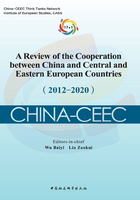
7. National Plus Sub-national Cooperation–a Twin-Engine Booster
It has been a tradition for China and CEECs to develop bilateral relations both at national and sub-national levels. Shanghai and Hebei Province were pioneers in this practice, and the Chinese-Polish Joint Stock Shipping Company[5] and the Zhongjie (China-Czechoslovakia) Friendship Farm[6] are well-known for opening new chapters in bilateral cooperation.
Building on the tradition, China-CEEC Cooperation is also driven at both central and local levels, with a large number of local governments participating in the cooperation with unprecedented enthusiasm. Efforts to enhance local cooperation is a demonstration of respect for the diversity of CEECs. Given the relatively small size of CEECs, more efficient cooperation can be achieved through pairing of Chinese provinces and CEECs or engaging city-size actors, for example, the Czech Republic and Zhejiang, Poland and Sichuan, Serbia and Hebei, Hungary and Hunan, etc.. In the meantime, such pairing does not exclude the third parties. For example, Sichuan has cooperation with Łódź, and so does the city of Changsha and Budapest. Given the close proximity of different localities in Europe, Duisburg and Amsterdam are also actively involved. The China-Europe rail freight transport is a case in point when it comes to China’s cooperation with CEEC local players. Through partnership between specific cities, the China-Europe rail freight transport has helped localities to develop joint trade and logistics routes and strengthen their trade ties.
Local cooperation has played an important role in supporting the overall China-CEEC Cooperation. Local governments of China have been actively involved in China-CEEC Cooperation, in order to help their businesses go global, increase their visibility, level of internationalization and opening-up and pool cooperation resources. Many Chinese provinces, including Zhejiang, Liaoning, Shandong and Hebei, have rolled out their own plans to take part in China-CEEC Cooperation and have put them into practice. By 31 December 2018, there had been 173 sister cities between China and 16 CEECs (Greece not included). Hungary ranked the first in terms of number of sister cities with China ( 38 pairs), followed by Poland (36) and Romania (35). The number of sister cities was 94 in the 30 years from the 1980s to 2012, and 79 additional pairs were developed in just six years from 2012 to 2018.